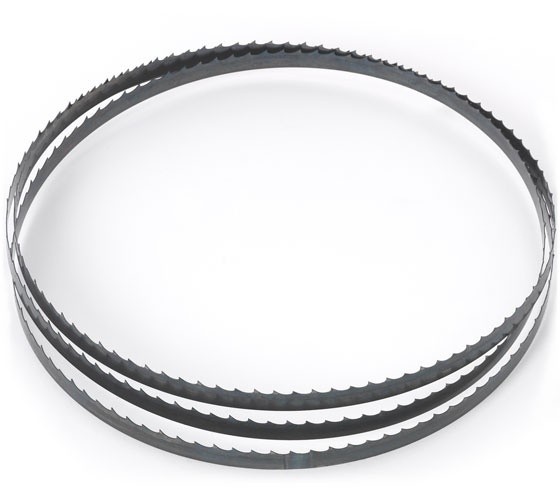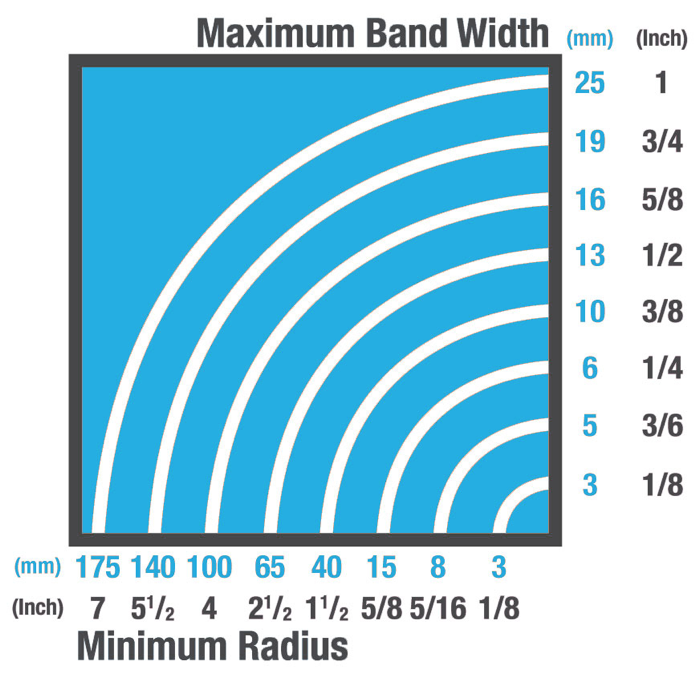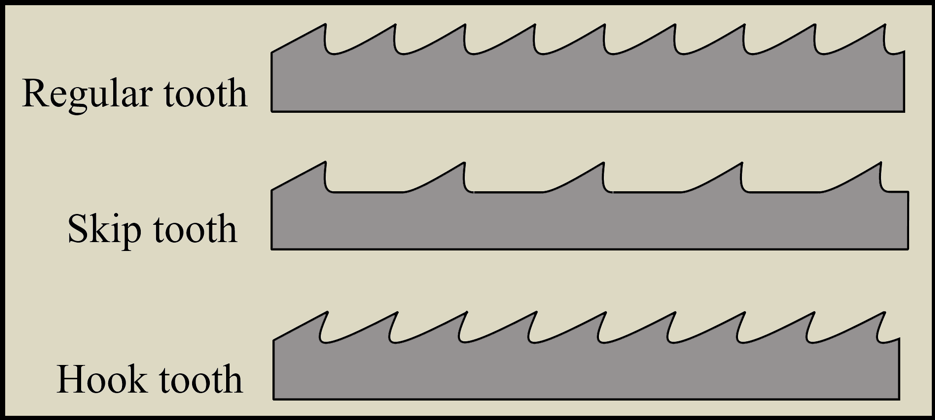Bandsaw Blades
By Nick Rollo

When it comes to making any type of irregular cut for woodworking, metalworking or lumbering a bandsaw is your go-to machine that will help you get the most intricate cut for your project. Categorized in the “saw” family a bandsaw is a long blade that consists of a continuous band of metal with saw teeth, stretched between two or more wheels. The blade is more of a ribbon, as it is constantly rotating along with the wheels, think of a VHS tape. Millennials Google VHS tape…
Choosing the correct bandsaw blade can be tricky, but a few tips from the team at Outpost Construction Supply can make the choice a little easier on you.
To start, you will need to identify what size blade your bandsaw requires (check the owner’s manual if you aren’t sure), what you plan to cut, and what type of cut you will be making.
Second, you need to figure out the width of the blade that will work for the type of cut you plan to make. Generally, wider widths make straighter cuts in thicker materials. If you’re trying to make a curve, your blade width should be marginally less than the radius of the curve you plan to make. Most blade manufacturers offer charts to help you pick the right width.

The bandsaw blade comes up through the flat, work surface of the table. This is where the piece to be cut is maneuvered into the saw to shape the cut. The small-sized blade will repeatedly move and performs for specific, intricate cuts.
A bandsaw offers total control by allowing the evenly distributed tooth load on the blades to make curved shape or irregular cuts to wood and metal.
Teeth for the cut and tooth configuration is just as important when choosing the best bandsaw blade for the job. Blades mainly come in three tooth configurations (with other configuration options available). The number of teeth per inch (TPI) is important because larger gullets (the space between teeth) allow for better debris removal. The closer spaced teeth will deliver a smoother finish cut. Deciding a blade’s tooth count and pattern depends on the type of cut and the material you’re cutting.
When determining Teeth Per Inch (TPI), try to find the uniform finish and feed rate that best fits the finish your trying to achieve. Bandsaw blades with more teeth will cut slower with a smoother finish. While bandsaw blades with fewer teeth will cut faster with somewhat of a rougher finish. In general, the fewer TPI, the softer the material (wood), the more TPI, the harder the material is to cut (metal).
Regular:
Regular tooth blades have proportionally spaced teeth and are ideally suited for general-purpose cutting and contour sawing. Regular blades are ideal for cutting thin materials with a fine finish.
Skip:
Skip tooth blades have widely spaced teeth at a 0-degree rake angle to prevent clogging when cutting softwood, non-ferrous metals and plastics.
Hook:
Hook tooth blades have a deeper gullet—that is, larger teeth—and a positive 10-degree rake angle. This helps the blade to feed into the material more aggressively. The result is faster cutting rates. Hook tooth blades are commonly used for long cuts in thicker wood, hardwood, plastic, and metal.

Once you have these steps figured out you should be able to choose the correct bandsaw blade. We hope these tips will help when trying to identify the correct bandsaw blade for your job. Please always check your bandsaw owners manual to ensure all your sizing is correct.
Use Code BANDSAW to receive 10% off your first order of bandsaw blades (must be over $25.00 purchase).